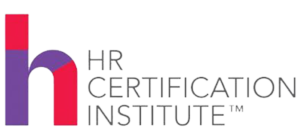The Data Entry Typing Test | Why, When, and How to Use It
We are a certified Continuing Education provider for



The Data Entry Typing Test | Why, When, and How to Use It
A data entry typing test is a very useful tool in recruiting for jobs that require typing speed and accuracy skills. It is one of the many skills assessment tools specialists use to screen and select candidates. They have become a staple of good recruitment practices because anyone can take them as long as they have a computer and an Internet connection. Moreover, HR specialists get automatically calculated results and gain standardized and real-time insights into candidates’ skills. Today, let’s talk about the data entry typing test, its definition, uses, and other features!
What Is a Data Entry Typing Test?
As its name suggests, the data entry typing skills test is a battery of assessment tools more often than not. It usually contains a typing speed test (or words per minute test) and a data entry skills test (also known as the alphanumeric data entry test). We will break things down in a few moments.
What is a Typing Speed Test?
We had mentioned this type of test before when we discussed the most popular HR assessment tools. It measures candidates’ specific skills when typing a written or audio text into a dedicated field (think about a report format). The candidate has to complete the test in a limited amount of time (one minute, five minutes, etc.). At the end of the test, recruiters get the results mainly in three score categories:
- Words per minute (a reason why we call such instrument a WPM test);
- Errors per minute;
- Adjusted words per minute (which is the difference between WPM and errors).
Depending on the typing test for jobs you use, you can get other result categories. Some recruiters use the typing test to learn more about their candidates. For instance, HR experts and executives use employees’ average typing speed, keystrokes per minute, and typing accuracy results when considering promotions or personnel development programs.
Companies use such tests not as evaluation instruments but as skill practice opportunities. Performing such tests regularly improves muscle memory and touch-typing (the capability of typing without looking at the keyboard).
They are crucial abilities to master in certain jobs and positions. For this reason, more and more recruitment centers and companies invest in skills-specific pre-employment assessment tools.
What is a Data Entry Test?
So far, we learned that a typing test requires candidates or employees to type different texts as quickly and precisely as they can for a pre-defined period. A data entry test measures the accuracy and speed with which candidates type different data categories into pre-defined fields. Data entry assessments include typing numbers, names, dates, social security numbers, addresses, financial information, car number plates, etc. These tests express their KPH results (keystrokes per hour) or precision percentage (with 100% being a perfect score).
Usually, recruiters get results as keystrokes per hour, but other scores are crucial as well:
- Overall score analysis;
- Average typing speed;
- Number of errors;
- Data accuracy, etc.
Both data entry and typing speed are transferable skills, in many experts’ opinions. As employment skills go, few jobs these days do not require individuals to show average competencies when typing or working with alphanumeric data. However, some typing speed tests and data entry tests come with specific formats and templates for certain industries: legal, financial, customer service, medical, etc.
Now that we have a better idea of what a data entry typing test is, we should move forward to the next chapter of this guide: when and why using such pre-employment assessment tools.
What Are the Jobs that Require Typing Skills and Data Entry Abilities?
More and more jobs require some levels of data entry and typing skills. Nevertheless, it is best to offer a quick summary of the most popular job roles for which recruiters and companies use our data entry typing test battery. So, let’s see what the occupations that require high skills levels when it comes to typing speed and accuracy or data entry precision are:
- Transcriptionists – they have to transcribe audio recordings into typed documents, so speed and accuracy are critical;
- Journalists;
- Copywriters;
- Data entry clerks and specialists;
- Coders and programmers – typing speed might not be a crucial employment requirement for coders, but precision and attention to detail are the bread and butter of the job. Moreover, when it comes to writing code, data entry skills are mandatory.
- Secretaries in all industries, focusing on legal secretaries whose jobs require a multitude of abilities recruiters usually test.
- Court clerks, reporters, paralegals, and legal auxiliary personnel. As we said, when it comes to using a typing speed test or a data entry one, you can choose specialized versions of such instruments for legal practice.
- Editors, DTPs, translators (especially those working with subtitling), SEO specialists, etc.;
- Customer service agents;
- Emergency dispatchers and 911 operators;
- Accountants, financial analysts, brokers, etc.
As you can probably see, you have quite a range of industries, jobs, and positions that require candidates and employees to show such specific skills and continuously improve them.
Why Do We Use Data Entry Typing Tests?
Regarding the “when,” HR experts and companies use these tests mostly in the pre-employment stage when they have to screen candidates. Of course, the remaining ones will go through complex evaluations.
When it comes to the “why,” things get a little confusing. Did a candidate send you a written resume? Well, by default, the candidate can type. School kids can type nowadays, as everybody has a computer at home, not to mention smartphones and other devices.
We continue to use data entry typing tests in recruiting because we need to hire talent. A report from 2017 issued by Digital Edge drew some interesting conclusions:
For an increasing number of American workers, the term “middle-skill” has come to mean “digital skills.” Some 82% of middle-skill jobs are now “digitally intensive. The number of jobs with digital skill requirements is growing faster, and the jobs pay more and offer greater opportunities for career advancement than jobs without those requirements.
By contrast, the jobs that don’t require digital skills are concentrated in only a few industries, such as transportation and construction. Middle-skill jobs comprise 46% of overall labor demand. Amidst changing technology and job responsibilities, digital skills demand continues to expand across the labor market and into new jobs.
Workers seeking to stay ahead of job market changes will need to acquire appropriate digital skills for career advancement. Many of these skills are “stackable,” meaning they can be used as building blocks to acquire more advanced skills as workers advance through their careers.
Additionally, digitally intensive positions represent opportunities for workers to achieve upward mobility.
Ben Bradley and Dan Restuccia with Chris Rudnicki and Scott Bittle, Burning Glass Technologies 2017
Are Data Entry Typing Tests Enough to Hire a Candidate?
No, of course not. In current times, digital skills are critical. Typing speed and data entry accuracy are just the iceberg’s tip.
Professional recruiters do not make hiring decisions based solely on the results of such tests. For this reason, we use cognitive testing, ability assessments, personality inventories, interviews, and so on. Nevertheless, it is not likely a digital marketing agency will hire someone whose typing, and data entry skills are slow and inaccurate for a senior SEO specialist position.
But how fast is fast when we discuss typing speed tests? And what do we mean by accuracy when it comes to data entry tests?
What Is The Minimum Typing Speed Required By Employers?
It all depends on the job and the employers, but the minimum typing speed required by most employers is 45 to 75 words per minute.
One thing you should know is that you have to match the typing speed with the job profile. For instance, court reporters use special keyboards when they stenotype, so they are veritable speed demons. On the other hand, an average 40 WPM score is reasonable for an employee who works in an office environment.
For this reason, the federal government or private companies do not hire exclusively on these tests’ results. Some candidates walk the extra mile and get self-certifications online that prove their typing speed.
On the other hand, let’s not forget that a data entry typing test focuses on speed and accuracy. There is no use in typing fast if the outcome is full of errors. For this reason, we usually pair a typing test with a verbal reasoning test, reading comprehension assessments, writing/speaking tests, and so on.
What Is a Good Score on a Data Entry Test?
Data entry tests’ scores of 98% accuracy or an average of 10,000 KPH are usually excellent results for most data entry tests.
Call center employees for technical issues, customer service representatives, emergency operators, nurses, etc., usually have to process and use complex data. Their job is to juggle with long numerical strings, VINs, social security numbers, all caps texts, and alphanumerical data.
Again, we never use only data entry test tools to hire new employees or help existing employees grow. Professional recruiters combine data entry tests with numerical reasoning tests, other cognitive abilities assessment tools, Matrix reasoning tests, and more. It is the only way to get standardized, measurable, and actionable insight into candidates’ skills and potential.
Are Data Entry Typing Tests’ Results Good Job Performance Indicators?
Most workers in over 80% of jobs currently use word processors, emails, spreadsheets, online and digital forms, chatbots, online platforms, social media, CSM and CRM software, etc. Typing speed and data entry precision are excellent digital skills to have for almost any job these days.
However, for middle-level jobs and high-level positions, you need to look beyond a typing test’s results. Structured interviews, candidate scorecards, and complex cognitive & personality tests are mandatory. Data entry typing tests are valid job performance indicators for some roles and entry-level positions. Consider personal assistants, junior copywriters, junior digital marketers, etc. When you hire project managers or economy experts, recruiters go to greater lengths in their pre-employment assessments.
Bottom Line
A data entry typing test is always a useful tool for candidate screening. Use it to get scores and make quick comparisons between job applicants. Always remember that performance anxiety, environmental stress factors, and even mood can influence the test results.
If you feel that a candidate performed poorly due to stress or background noise, you should backup your hiring decisions with a multitasking test. To better understand the candidates’ skills levels, we recommend our skills assessment battery, including writing, reading, MS Word, Outlook, computer literacy, and MS Excel tests.
Now, it is your time to share your thoughts and experiences with us! Have you ever used the Hire Talent Data Entry Skills Test? Have you found it useful? What other data entry typing tests do you use in your current practice and why? We’d love to hear your opinions, suggestions, and advice on these types of pre-employment assessment instruments!
Book An Appointment
Schedule a Free Consultation to Turn your Hiring Process into a Top Talent Generating Machine
Talk With Us Now
Identify Top Candidates ASAP
(833) 332-8378
